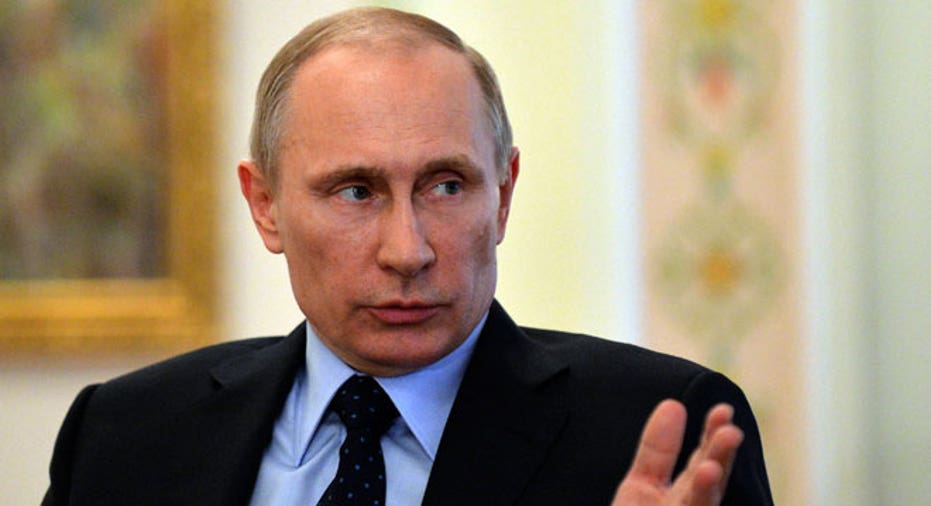S&P Dims Outlook on Russia to 'Negative' on Geopolitical Jitters

Hours after President Obama threatened to sanction key sectors of Russia’s economy, Standard & Poor’s downgraded its outlook on Russia on Thursday to “negative” amid fears over the economic fallout of the deteriorating geopolitical situation.
The move by the ratings company underlines the financial ramifications of Moscow’s annexation of Crimea, which has slammed Russia’s equity and currency markets.
“The outlook revision reflects our view of the material and unanticipated economic and financial consequences that EU and U.S. sanctions could have on Russia's creditworthiness following Russia's incorporation of Crimea,” S&P said in the report.
Specifically, S&P cited the prospect of U.S. and European Union economic sanctions in the wake of the Crimea move that could reduce the flow of potential investment, fuel capital outflows and weaken Russia’s economy.
Earlier, Obama signed a new executive order expanding the U.S. government’s ability to hit Russia’s economic sectors, including banking, energy, metals and mining, engineering and defense companies.
"This is not our preferred outcome... However, Russia must know that further escalation will only isolate it further from the international community," the president said.
S&P said the negative outlook reflects at least a one in three chance that S&P could reassess risks to Russia’s creditworthiness based on the country's “deteriorating” external profile and limited monetary policy flexibility. S&P said it could downgrade Russia within the next 24 months.
The ratings company said it expects the EU and U.S. to impose further sanctions, especially if the situation deteriorates further through protests in Eastern Ukraine. Still, S&P said future sanctions “could be tempered by European economic trade and energy interests.”
The outlook downgrade highlights how while Russian President Vladimir Putin faces few military obstacles from the West to his recent aggression, the economic and financial fallout could give him pause.
S&P said it believes the geopolitical crisis has already hurt Russia’s economy, as evidenced by the need for the central bank to intervene in foreign-exchange markets and dramatically hike interest rates. The ratings firm also estimates $60 billion in capital outflows from Russia in the first quarter, matching the level for all 2013.
At the same time, S&P also downgraded its gross domestic product growth forecast for Russia for 2014 and 2015 to 1.2% and 2.2%, respectively. Growth slowed to just 1.3% in 2013, the lowest rate since 1999, excluding the global economic downturn in 2009.
Slower growth could weigh on Russia’s fiscal situation in the form of deeper deficits and vanishing current account surpluses, S&P said. The country is also grappling with an aging population that has hurt its long-term fiscal outlook.
S&P warned it sees a material risk that the conflict between Russia and Ukraine could expand beyond Crimea.
On the other hand, S&P said it could upgrade its outlook on Russia to “stable” if the country’s economy were to “prove resilient to the current challenges” and if its external and fiscal buffers were to remain in line with current forecasts.
It also emerged on Thursday that the Securities and Exchange Commission recently contacted public funds with exposure to beaten-down Russian markets to confirm they are weighing risks and properly disclosing their investments.